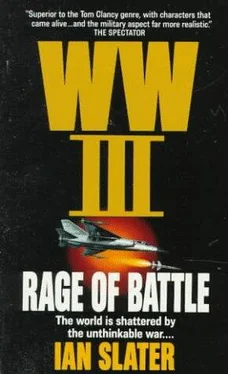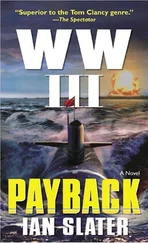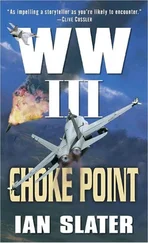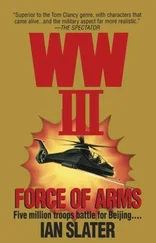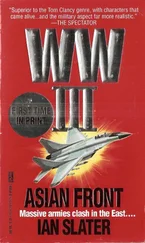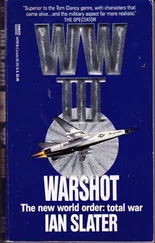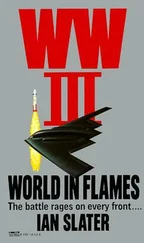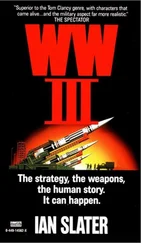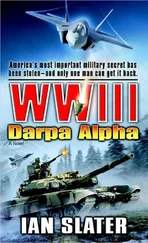Ian Slater - Rage of Battle
Здесь есть возможность читать онлайн «Ian Slater - Rage of Battle» весь текст электронной книги совершенно бесплатно (целиком полную версию без сокращений). В некоторых случаях можно слушать аудио, скачать через торрент в формате fb2 и присутствует краткое содержание. Год выпуска: 1991, ISBN: 1991, Издательство: Ballantine Books, Жанр: Триллер, на английском языке. Описание произведения, (предисловие) а так же отзывы посетителей доступны на портале библиотеки ЛибКат.
- Название:Rage of Battle
- Автор:
- Издательство:Ballantine Books
- Жанр:
- Год:1991
- ISBN:0-345-46514-8
- Рейтинг книги:3 / 5. Голосов: 1
-
Избранное:Добавить в избранное
- Отзывы:
-
Ваша оценка:
- 60
- 1
- 2
- 3
- 4
- 5
Rage of Battle: краткое содержание, описание и аннотация
Предлагаем к чтению аннотацию, описание, краткое содержание или предисловие (зависит от того, что написал сам автор книги «Rage of Battle»). Если вы не нашли необходимую информацию о книге — напишите в комментариях, мы постараемся отыскать её.
Rage of Battle — читать онлайн бесплатно полную книгу (весь текст) целиком
Ниже представлен текст книги, разбитый по страницам. Система сохранения места последней прочитанной страницы, позволяет с удобством читать онлайн бесплатно книгу «Rage of Battle», без необходимости каждый раз заново искать на чём Вы остановились. Поставьте закладку, и сможете в любой момент перейти на страницу, на которой закончили чтение.
Интервал:
Закладка:
The blizzard, so welcomed by Kirov’s divisions and which Kirov’s staff had predicted would bog down the Americans, was proving no impediment. From the Bielefeld line to the Danube three hundred miles to the south, the American M-1s, German Leopards, and British Challengers were about to be given new life. The airlift from Brest would fly in more supplies than in either the famed Berlin airlift of ‘48 or the resupply of Khe Sanh in the Vietnam War. In the blinding white-out, American ingenuity, German organization, and British doggedness came together like old friends called to the bedside of a critically ill relative. In the snow the Americans’ high-tech instrument flying constantly amazed the Soviet divisions that had broken through, rolling toward what they had thought was certain victory.
With fighter cover provided by RAF Tornados flying out of southern England and American F-111F swing-wing fighter interceptors, dozens of the giant 245-foot-long, 65-foot-high American C-5C Galaxies, flying out of Brest, delivered fuel and ammunition to the hastily prepared prepo sites west of Munster. The giant transport’s normal load of 121 tons was increased to 150 tons, the Galaxies able to cut down on then-own fuel load because of the short sixty-eight-minute, five-hundred-mile flight from Brest to the Dortmund-Bielefeld pocket.
Almost none of the Galaxies landed in the pocket; most of their intermodal CONCAR — containerized cargo — having being taken straight from ship to plane, was dropped low by chute-braked palette. The cargo of ammunition and fuel drums from the hundreds of forty-eight-foot-long containers was heading toward the front within twenty minutes of a palette skidding to a stop, the snow helping to brake the palette’s slide in a shorter distance than usual.
The massive resupply drop had no noticeable effect for the first six to seven hours, the NATO-sown mine fields Freeman had relied upon to slow the Soviet armor breached by Russian divisions pouring through gaps where the mines had been rendered useless in the heavy fall of snow. Because of this, a British infantry battalion and an American Ranger regiment were overrun southwest of Bochum, over three thousand taken prisoner. Many of them were shot out of hand for no other reason than that the Soviet supply line — already stretched for the final attack on the besieged Allies — had no containment areas or food allocated for prisoners. After U.S. M-16 and M-60, and U.K. SLR 7.62-millimeter ammunition had been stripped from the British and American bodies, they were left to be covered by the snow, Kirov and his staff regarding the fuel necessary for a bulldozer to dig mass graves too vital for their armored and mechanized divisions. The early discovery of this by an American airborne battalion led to some of the most vicious fighting anywhere on the perimeter.
Six hours after the airlift had begun, around 2200 hours, the snow-filled sky over the pocket became brilliantly incandescent, with blossoming patches of ruby-red and ice-cream-white flares shot through with green and orange parabolas of tracer as refueled Apache and Cobra gunships, flying in excess of 150 miles per hour, swarmed across the outer reaches of the chaotically shifting and segmented front, firing thousands of Hellfire — fire and forget — antitank missiles. Though equipped with infrared sensors far superior to those of the Soviets, the initial Hellfire attacks were not as effective as hoped because of the lack of laser-beam-equipped forward air controllers to guide each missile to its target. NATO choppers, with pods of eight TOW-tube-launched, wire-guided missiles, were more effective against the enemy tanks, the TOWs not requiring anyone on the ground to assist. Soviet Hind and Havoc helicopters, having had it their own way for the last forty-eight hours because of NATO’s rapidly dwindling fuel supplies, were now faced with a far different situation, scatter fragments from the exploding warhead of the Sidewinder missiles proving deadly to the Soviet gunships.
Much of the credit for the destruction of the Soviet choppers was due to the contour-imaging guidance radar aboard the American Apaches, which permitted their pilots NOE, or “nap of earth” flying, the choppers able to skim less than fifty feet above ground, tree, or water contour even in the worst snow conditions. NOE flying was especially easy over the flatter southern sector of the DB pocket.
By the time Major Norton had returned from Brest to Freeman’s hospital HQ outside Munster, he found the general, though still rigid in his brace, very much alert, looking up at the maps of Lower Saxony, North Rhine-Westphalia, and the Rhineland Palatinate that were taped to the field hospital’s ceiling. The general’s exhausted yet attentive staff clustered about the bed, the mood of new hope evident from the sheer vitality that radiated out from Freeman, who was holding forth a telescopic pointer, stabbing at the ceiling. “Ah, there you are, Norton. What d’you think of my chapel?”
Before Norton could say anything, Freeman raced on. “If Michelangelo could do it on his back, so can I, eh?”
“I guess so, General. I heard on my way up here that we’ve stopped our withdrawal.”
“Stopped!” It sounded like an obscenity. “By God, Major, we’re moving. We are going on the attack! Their advanced dump — the bastards had it hidden away up here in the goddamned woods — has blown up in their faces.” The general moved the pointer north of Bielefeld. “Outside Stadthagen.” Freeman’s face was so flushed with optimism that at first Norton thought the general had had some kind of adverse reaction to the pain shot. “Now,” Freeman continued, lowering the pointer and looking around at his staff, “the shoe’s on the other foot. Kirov—” the general paused, savoring the moment “—is running out of gas, gentlemen. Here, Norton,” said Freeman, passing him a bulging manila folder. “Feast your eyes on these.”
They were infrared aerial reconnaissance photos. At first Norton thought they had been badly overexposed — everything seemed white — almost no contrast at all to the wooded area around the edge of the photographs. Then he realized what he was seeing. “My God, General, that’s some bonfire. It must be—” Norton glanced down at the scale line.
“Over two thousand yards,” Freeman cut in. “They must have had enough gas — our gas — there to fuel Lord knows how many divisions.” Freeman paused and looked about at his staff. “God is on our side, gentlemen. We shouldn’t get too damn cocky about this. Least not until we’re in Moscow.”
“Well, General,” said Norton good-naturedly but clearly skeptical, “I think it’ll be some time before we get to Moscow. There’s the matter of eastern Germany, Poland—”
“Norton,” Freeman responded, “you’re a good G-2. You’ve got an eye for detail that surpasses anyone I know. That’s why I seconded you to my staff, but you’re too conservative in matters military. Because we’ve been losing up to this point, you want to hold back. Consolidate. I understand your caution, but it would be fatal. It’s un-American. Their tanks are chugging to a stop, and within twenty-four hours we’ll have every one of our tanks gassed up and ready to go. Instead of sitting on our butts in defilade — our only option till now — we can move out in force. Kick their ass all the way back to the Volga. At this moment, gentlemen, we have a confluence of forces that will not visit us again — our navy’s secured Atlantic resupply of troops and materiel, the enemy’s supply line is now overextended, out of gas, and we have air superiority. With our Thunderbolts killing their tanks by the bushel, it’ll be a rout! We’ll grow stronger as they grow weaker—” Here Freeman paused, fixing each man in turn with what his commanders called the “Patton look.” “If we strike now— while they’re confused — out of steam.”
Читать дальшеИнтервал:
Закладка:
Похожие книги на «Rage of Battle»
Представляем Вашему вниманию похожие книги на «Rage of Battle» списком для выбора. Мы отобрали схожую по названию и смыслу литературу в надежде предоставить читателям больше вариантов отыскать новые, интересные, ещё непрочитанные произведения.
Обсуждение, отзывы о книге «Rage of Battle» и просто собственные мнения читателей. Оставьте ваши комментарии, напишите, что Вы думаете о произведении, его смысле или главных героях. Укажите что конкретно понравилось, а что нет, и почему Вы так считаете.
